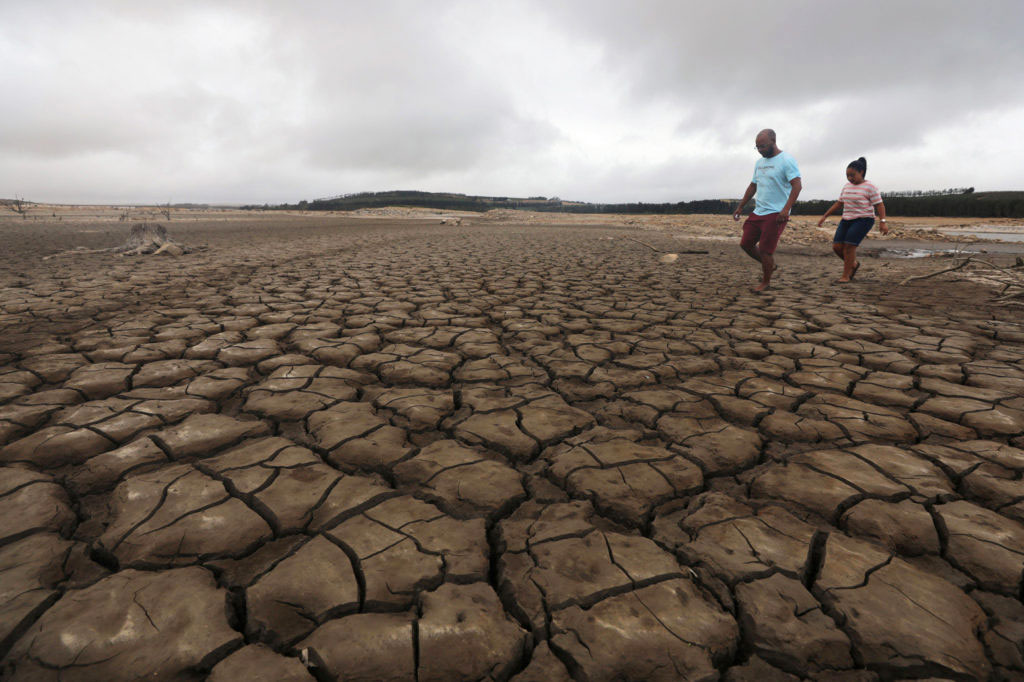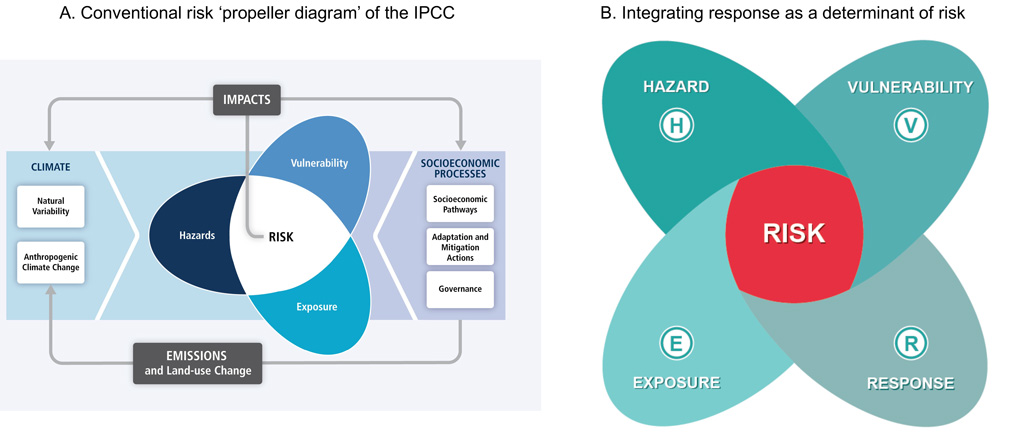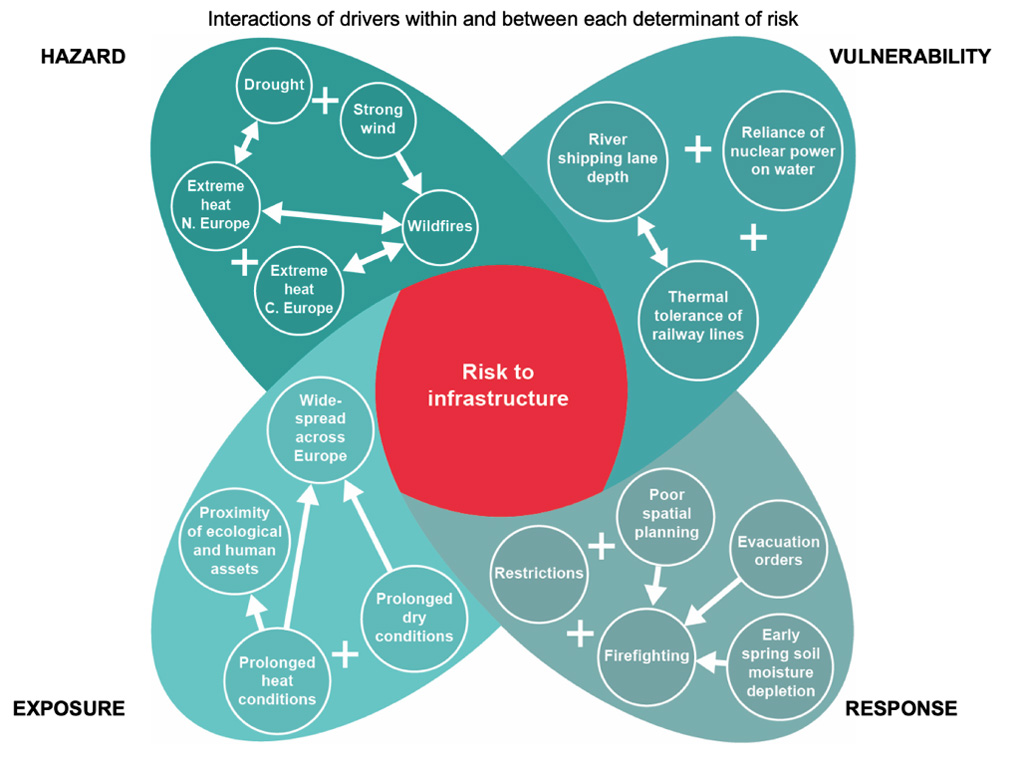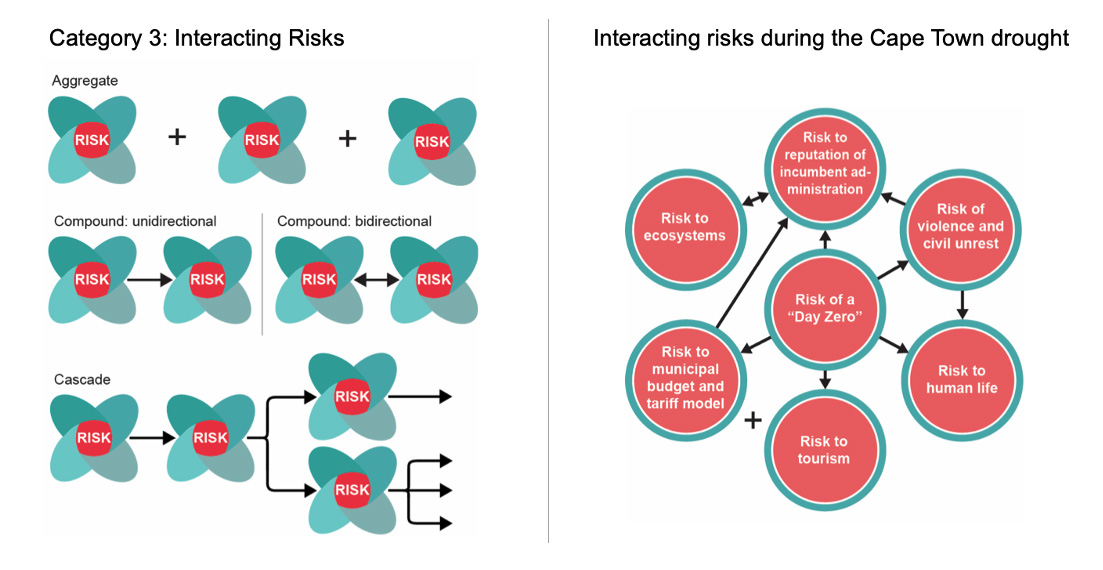
Guest post: How to assess the multiple interacting risks of climate change

Guest authors
04.27.21
Guest authors
27.04.2021 | 2:18pmA key threat of a warming climate is that it does not pose one single risk, but rather it presents multiple, interacting risks.
In a highly connected world, climate risks – and our responses to them – can be transmitted from one system or sector to another, creating new risks and making existing ones more or less severe.
For example, global warming of 2C is projected to reduce yields of staple crops by 5–20%. Yet greenhouse gas mitigation options can also increase food insecurity if bioenergy crops displace food crops, or can lead to biodiversity loss from land-use change and afforestation.
Similarly, trade networks link distant food systems together and can, thus, compensate for reduced food security. However, they can also create new risks of global impacts, such as multiple-breadbasket failure, more rapid spread of disease, pests and invasive species, and new threats to local food security from changes in commodity prices caused by policy choices made elsewhere.
These interactions include both the risks caused by climate change itself and those triggered by adaptation and mitigation responses (hereafter collectively termed “climate change risks”). Adaptation and mitigation actions are often not considered as part of climate risk assessment.
So how do we address these challenges for assessing and responding to climate change risks? In a new paper, published in the journal One Earth, we do so in three ways – through recognising mitigation and adaptation responses as potential drivers of risk, identifying how the multiple drivers of risk interact, and pinpointing how risks interact between themselves.
Include response options into risk assessment
Typically, risk is considered as a combination of three components – hazard, vulnerability and exposure (see left-hand diagram below). This is the approach used by the Intergovernmental Panel on Climate Change (IPCC) to date.
In a simplistic example, the risk to transport infrastructure from extreme heat – the hazard – involves the heat tolerance of rail infrastructure – its vulnerability – and the spatial location of rail infrastructure relative to the extreme heat – its exposure.
However, human responses to climate change can also affect these different components. Mitigation and adaptation responses carry the potential for positive and adverse consequences – including through multiple trade-offs and co-benefits – and, thereby, affect the overall nature and complexity of risk (see right-hand diagram).

Despite the fundamental part that human responses can play, they are generally considered separately or secondarily to interactions between hazards, exposures and vulnerabilities. As a result, response is examined for how it can manage or reduce risk rather than how it also creates risk.
For example, managed retreat from advancing sea level rise lacks guidance on how responses might have knock-on impacts for community wellbeing and consequently lacks implementation frameworks for when to move.
Responses should, therefore, be at the centre of climate risk assessment and management – particularly when they hold the potential for negative or positive outcomes for human or ecological systems. If human and biological responses to climate change were better integrated with the concept of risk, its assessment would be more policy relevant and would better reflect real-world decisions.
Adding responses as a driver of climate change risk helps unify what have to date been largely separate conversations on the “physical” risk of climate change and the “transition” risk from actions that move us towards a more climate resilient society. Real-world decisions often represent trade-offs within this risk space. A more unified risk framework – providing a clear recognition of how this risk to different people and ecosystems is generated by climate hazards, exposure, vulnerability and responses – helps better characterise risk and the decision processes that underpin policy choices.
Interacting multiple drivers of risk
Interacting climate hazards are currently a key focus for risk assessment, especially for extreme events, such as concurrent heat and drought, and heavy rainfall coinciding with a storm surge to increase likelihood of flooding.
However, the physical science research for these “compound” extremes has not yet been integrated with the multiple interactions among drivers of exposure, vulnerability and response.
For example, between May and August 2018, Europe experienced a heatwave where concurrent heat extremes were compounded by severe drought conditions. Low water levels led to shipping restrictions and closure of nuclear power plants while railway lines buckled under the heat. Central and northern Europe saw crop yield reductions of up to 50% and livestock loss.
As illustrated in the figure below, the severity of the European heatwave was determined by interactions among multiple drivers within each individual risk factor. So, the interacting drivers of strong winds, drought and extreme heat led to severe wildfires that resulted in extensive damage to infrastructure and extended over popular tourist areas, claiming more than 100 lives in the Attica region of Greece.
The risk to infrastructure from wildfire was further compounded by ecological responses to an early spring, where increased vegetation growth contributed to faster than normal soil moisture depletion. In turn, this interacted with human responses, including spatial planning and inadequate coordination of evacuation and firefighting measures.
In addition to the risk to infrastructure from wildfire, its vulnerability was affected by the dependency of both energy and transport on available water for electricity generation and shipping, while transport infrastructure was further vulnerable to extreme heat.

Interacting risks
Climate risk assessment also needs to consider interactions between multiple risks. As illustrated in the left-hand figure below, risks can “compound”, “cascade” and “aggregate” with others.
Compound climate risks are those where two or more climate risk drivers affect each other to increase the overall severity of risk. For example, risk to human life from tropical storms can compound with risk to life from Covid-19 in evacuation centres.
A cascade is when one risk triggers multiple other risks in a proliferation of interactions. For example, risk of tree death from drought affects the risks to health and property from wildfires, which then affects the risks to river ecosystems, property and human life from landslides.
Aggregation occurs when risks with unrelated causes – including those not directly related to the climate – occur simultaneously. For example, if an area is hit by an earthquake and a drought at the same time.

This focus on interactions among multiple risks across different sectors and/or regions is important because they are a reality people need to manage regardless of the level of assessment available to inform decision-making.
Take the example of Cape Town’s “Day Zero” drought that peaked in 2018. Effective responses to the drought were delayed due to the political risk of declaring a disaster and a lack of feasible water supply alternatives.
Responses became increasingly urgent in early 2018 as the potential of a Day Zero event became possible, the point at which a city of four million people might run out of water. This risk was anticipated to cascade to affect health, economic output and security – as illustrated in the figure above. In addition, responses by different groups interacted to generate risks to municipal finance as households going off-grid led to a dramatic decline in revenues collected from the sale of water by the municipality.
Considering these interactions is important as it shifts the focus from an individual climate hazard as a single event towards an appreciation that it could be sitting within a set of multiple events interacting continuously with evolving social and economic conditions.
The reason we care about the interactions among risks is that they can increase or decrease the overall level of risk – so that the overall risk may even be very different from just looking at the individual parts.
Implications for response
Understanding the interactions among risks has the potential to change the way we respond to climate hazards.
However, the existence – or perception – of response risk is also one of the barriers to action. For example, policymakers may worry that the risk associated with implementing a response is greater than the original risk itself.
Complex climate change risks can lead to a greater chance of crossing unknown response capacity tipping points. For example, as Cape Town’s “Day Zero” approached, municipal officials developed a “critical water shortages disaster plan”, which aimed to provide responses at the level of individual streets. However, previous disaster planning had not factored in this level of detail on how a “Day Zero” event would manifest and cascade with infrastructural and social vulnerability – nor budgetary limits in a highly socially differentiated city.
When dealing with this complexity, scenario approaches and “what if” planning are flexible options that can be deployed relatively rapidly. Scenarios often describe unlikely or surprising futures and provoke consideration of how critical uncertainties may affect the future. They thereby broaden perspectives, challenge assumptions and highlight hidden dangers and opportunities.
Scenario approaches can also be combined with more quantitative stress-testing methods to identify where existing climate change adaptation might be insufficient. However, this requires careful evaluation by a range of experts and stakeholders.
It is also important that risk assessments and adaptation strategies incorporate local and traditional knowledge and associated sustainable management practices. For example, “participatory modelling” – which involves local communities in assessing risks and understanding local social-ecological systems – can better identify response options, as well as the limits of response.
The aim of the framework we outline here is to strengthen assessment of complex climate change risks by clarifying the types of interactions that generate risk and where they originate.
Climate change risk assessment may often begin at lower levels of complexity, but should be clear about the need for regular updates based on new knowledge of interacting risk drivers – vulnerabilities, exposures, hazards and responses – and interacting risks. In this way, climate change risk assessment will better reflect the real-world challenges of social and political systems.
Simpson, N.P., et al. (2021) A framework for complex climate change risk assessment, One Earth, doi:10.1016/j.oneear.2021.03.005
-
Guest post: How to assess the multiple interacting risks of climate change
-
Guest post: Integrating response within complex climate change risk assessment

